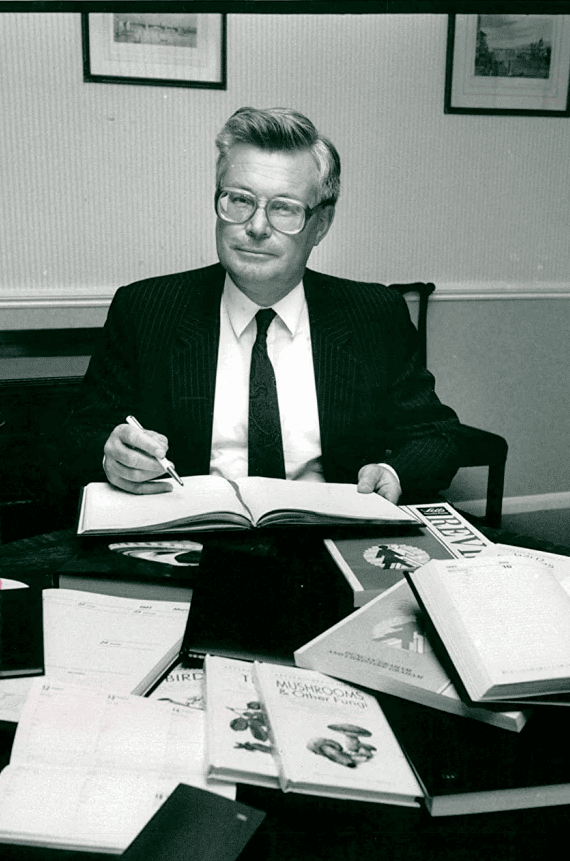This year is the 225th anniversary of Letts. We are celebrating this extraordinary milestone with a series of articles (and events) – from the early years right up to today. The fourth article looks at the transition to the fifth and sixth generation of the family business – run by Leslie and Anthony Letts.
It was not until the 20th century that a certain dynamism becomes apparent in the diary products, reflecting underlying changes in demand which took the diary from a conventional but restricted market of a few hundred thousand to the mass consumer product of today. This rapid growth in demand, no doubt partly stimulated by Letts, was matched by a growth in the business which developed from a small family partnership at the run of the 1900’s to the worlds leading diary publishing business later in the century employing nearly 700 people and producing around 20 million diaries a year. The only aspect that had not changed was the family link, with the fifth and sixth generation in control.

The main spur of growth came as a result of the development of the pocket diary, which, being an article of personal attire rather than a desk-bound product, responded more quickly to changes in taste. The first development could be seen in the 1890’s, when thumb-size diaries were produced, no doubt in response to the late Victorian love of miniatures. These diaries were novelties rather than serious products. Then, in the early part of the twentieth century, the specialist diary, catering for specific interests, indicated a move to increase the market by segmentation. This was shortly followed by the first diaries designed as corporate gifts, and it was this sector of the market that grew to dominate demand in most developed countries later in the 1900’s.

These new uses for the diary stimulated a greater responsiveness to the changing requirements of the consumer. Internal layouts became more formalised, underlying the future-planning aspects of modern diary-keeping, while the binding and general design of the diaries reflected current tastes. Patriotism during the World Wars, the delicate fashion of the 1920’s and the very distinctive tastes fashioned during the eruption of youth in the 1960’s and 1970’s are all very apparent in the diary designs of those periods.
The 1970’s introduced a more international approach to the market, for Letts dairies were no longer confined mainly to the United Kingdom. Traditionally sold within the Commonwealth, other markets were now penetrated so that Letts diaries were sold to most of the main markets in the world. The most significant development having been made in North America, where sales grew from 100,000 dollars in the late-1970’s to 10 million dollars and where Letts was the leading brand-name for quality diaries by the 1990’s.
The need to appeal to a more sophisticated and international demand helped to raise the profile of the diary as a consumer product and this was very apparent in the ranges published in the 1980’s and 1990’s. The influence of fashion and the need to compete for space in retail outlets which themselves became increasingly conscious of design, became modern social trends which manifested themselves quite clearly in late century design of diaries. Just as an individual diary when written up in the traditional way provides a window on one small element in society at the time, so a range of diaries for a given year reflected some of the tastes and habits of contemporary society.

Letts invented the loose leaf diary, only to watch Filofax dominate the market. In the end Letts Diaries acquired Filofax – a nod to the growing importance of this new category.
What of the future? Will digital diaries take over diary-keeping entirely? Over time, they will to a certain extent, even though paper based diary products sell in very large volumes. And though electronic devices are made to plan time and store information, they struggle to replace fully the real purpose of a diary. After all, the diary is a personal friend, to whom one entrusts details of ones appointments and aspirations, and in whom one confides ones most intimate thoughts.
You could argue that it was this thinking that led the Letts family to sell the majority of the diary business in the late 1990’s, when arguably the paper based diary market was at its peak. And through the turn of the century the family divested most of their paper based products. Following the millennium change the Letts family’s focus on the diary gradually drew to a close as they started to turn their attention to future Letts family ventures and investments, focused around the digital revolution.

And so began the generational handover from Anthony Letts, the 6th generation of the eponymous diary family, to Philip Letts, the 7th generation of Letts and the current leader of the family’s commercial activities.
In the last anniversary article about the history of the eponymous Letts diary family, we will look at the transition to the new, twenty first century Letts Group, led by Philip Letts, who alongside Anthony, is nurturing the 8th generation of this historic publishing family.